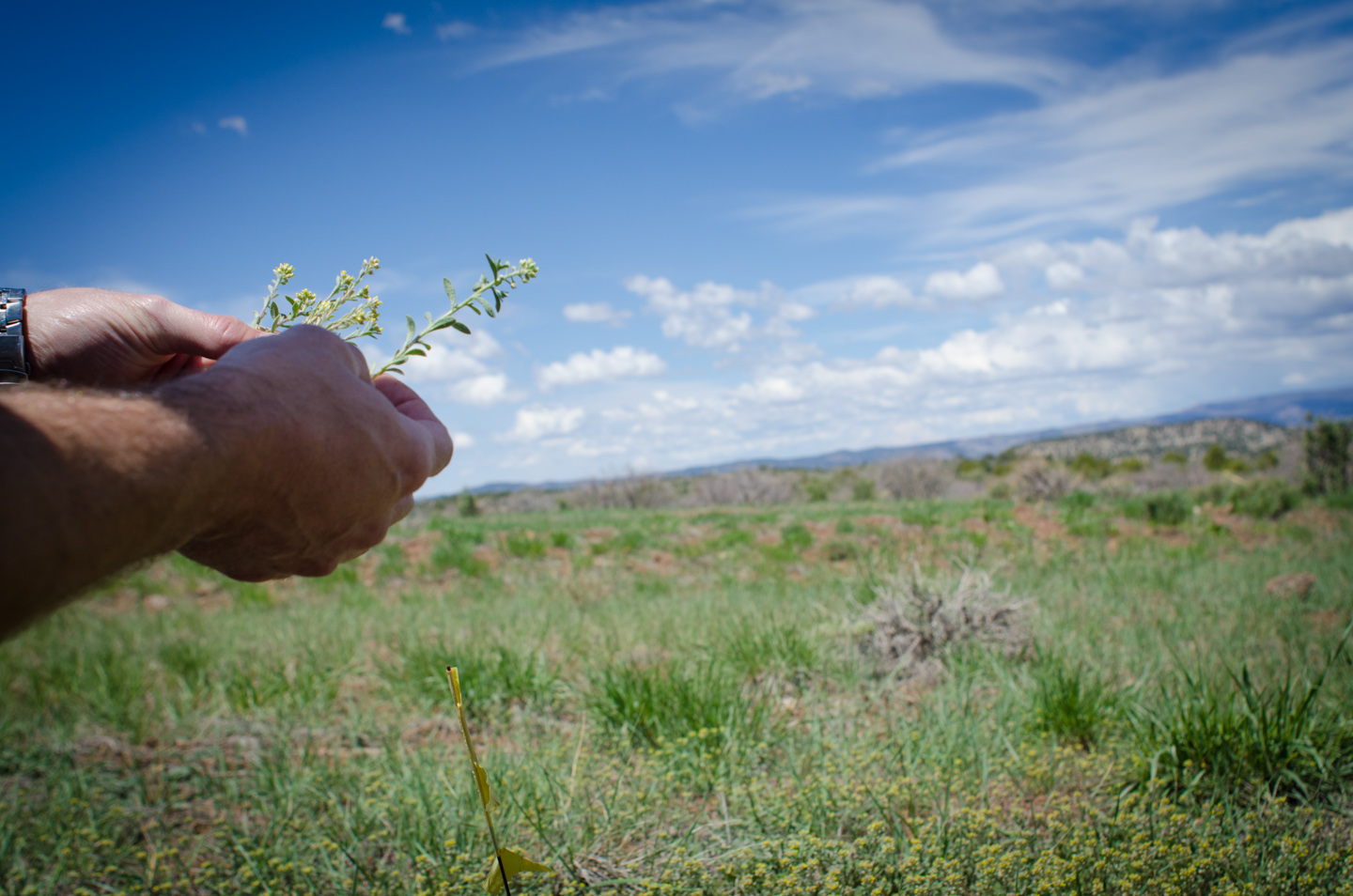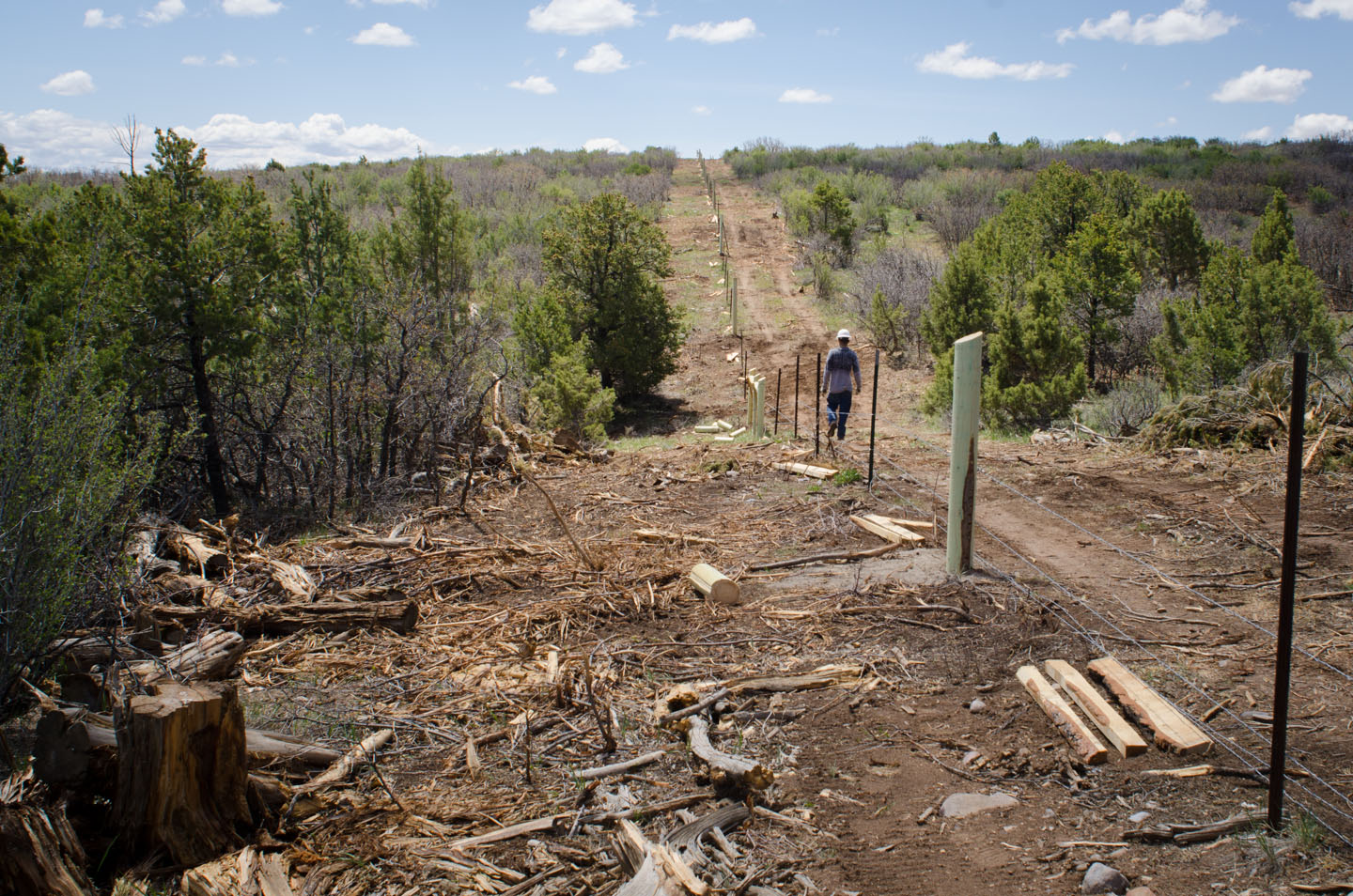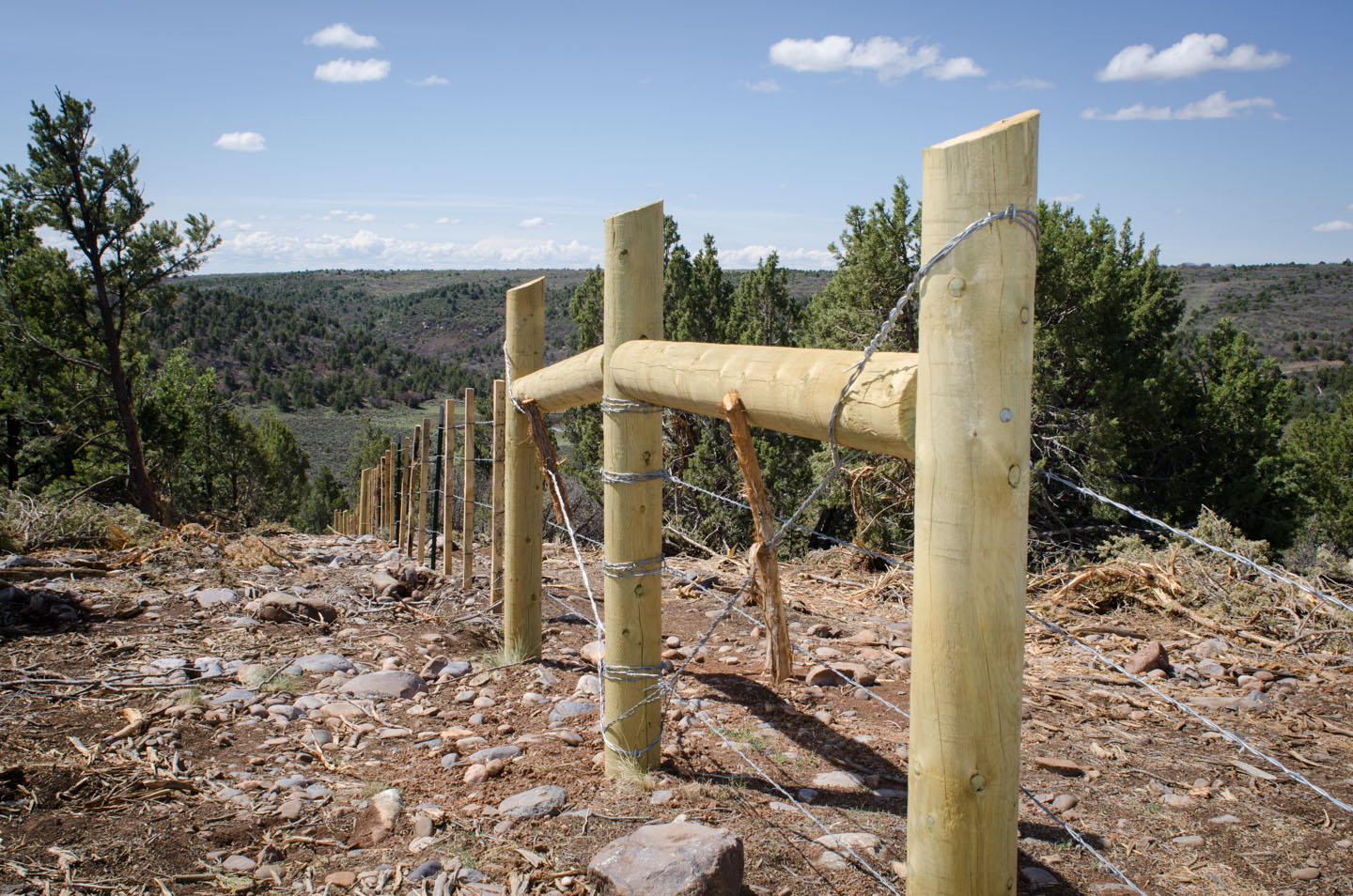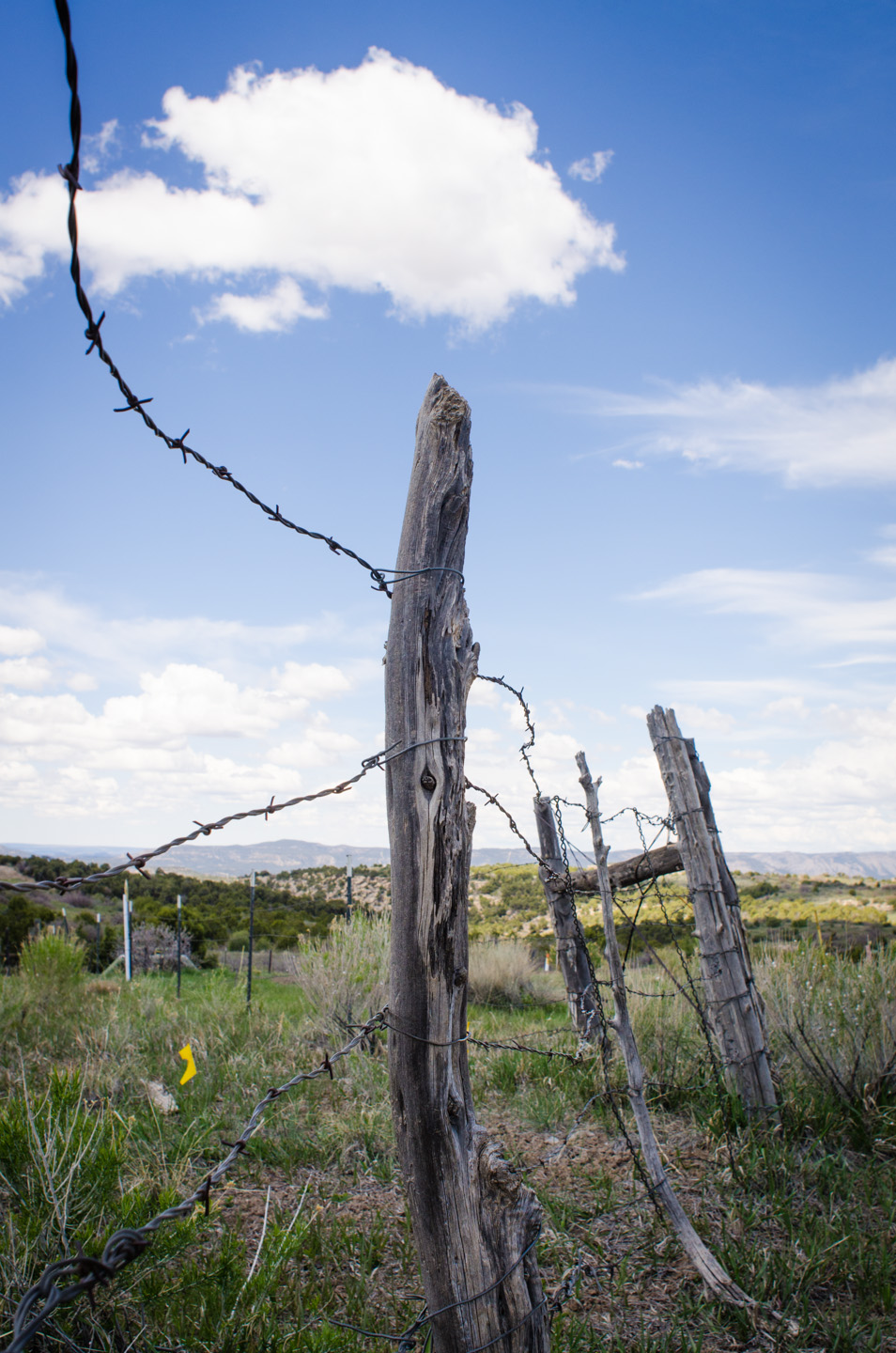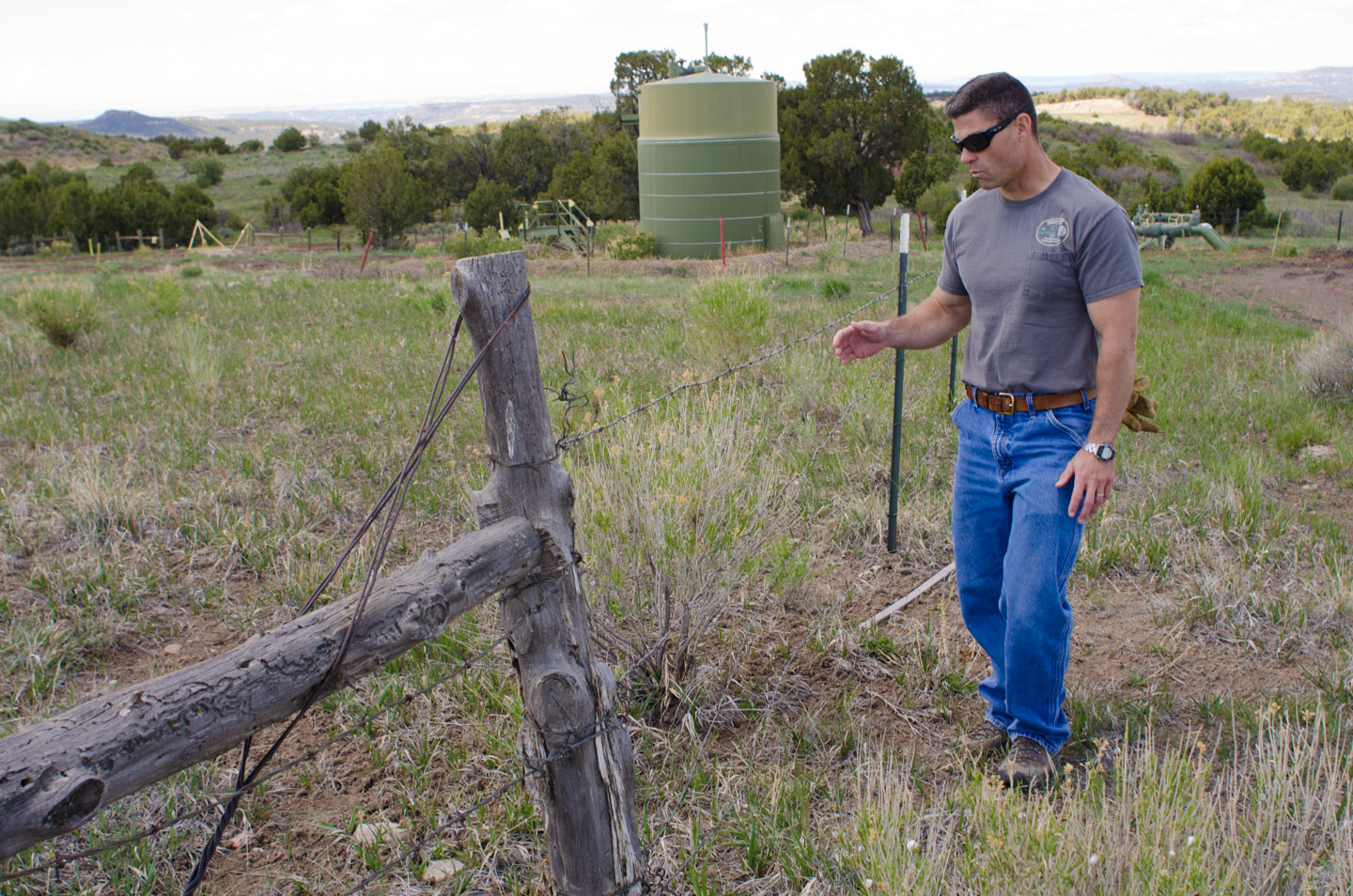Fencing project breathes new life into tribal rangelands


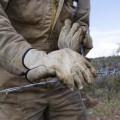





The Beef/Alamo fencing project, which will span 22,000 feet across the Southern Ute Indian Reservation, began in April 2013 and is slated for completion by the end of June.
The tribally funded project, awarded to Crossfire LLC, will replace existing fence line that bisects the Trail range unit.
The new fence line will help the tribe’s Range Division manage livestock within tribal range units, said Bill Gwinn, project manager.
The existing fence dates back to the 1960s. What remains of the original fence is in disrepair and is often overgrown, Gwinn said.
“It’s important so that we can establish a sound grazing rotation up there,” said Range Division Head Jason Mietchen. “The surest way to achieve a sustainable system is to rotate — indefinitely.”
Overgrazed range units lead to environmental degradation, Gwinn said. Native grasses cut too close to the surface are less likely to recover, leaving an opening for more opportunistic species, such as cheatgrass, knapweed, Canada thistle and fillaree, he said.
The invasive weeds are often passed over by grazing animals. Left to flourish, they proliferate across once-healthy rangelands, replacing more desirable grass and “browse” species such as shrubs, sagebrush and bitterbrush, he added.
Jason Cole, crew foreman for the Crossfire fencing team, said extra care was taken in constructing and reinforcing fenced areas around flood zones and stock tanks — sections where the structure is likely to endure greater pressure.
The new fence line will cut a more direct line through rocky, forested areas. A right-of-way is cleared on either side of the fence, useful for long-term maintenance, Gwinn said. The right-of-way is also often adopted by wildlife as a natural access corridor, he said.

